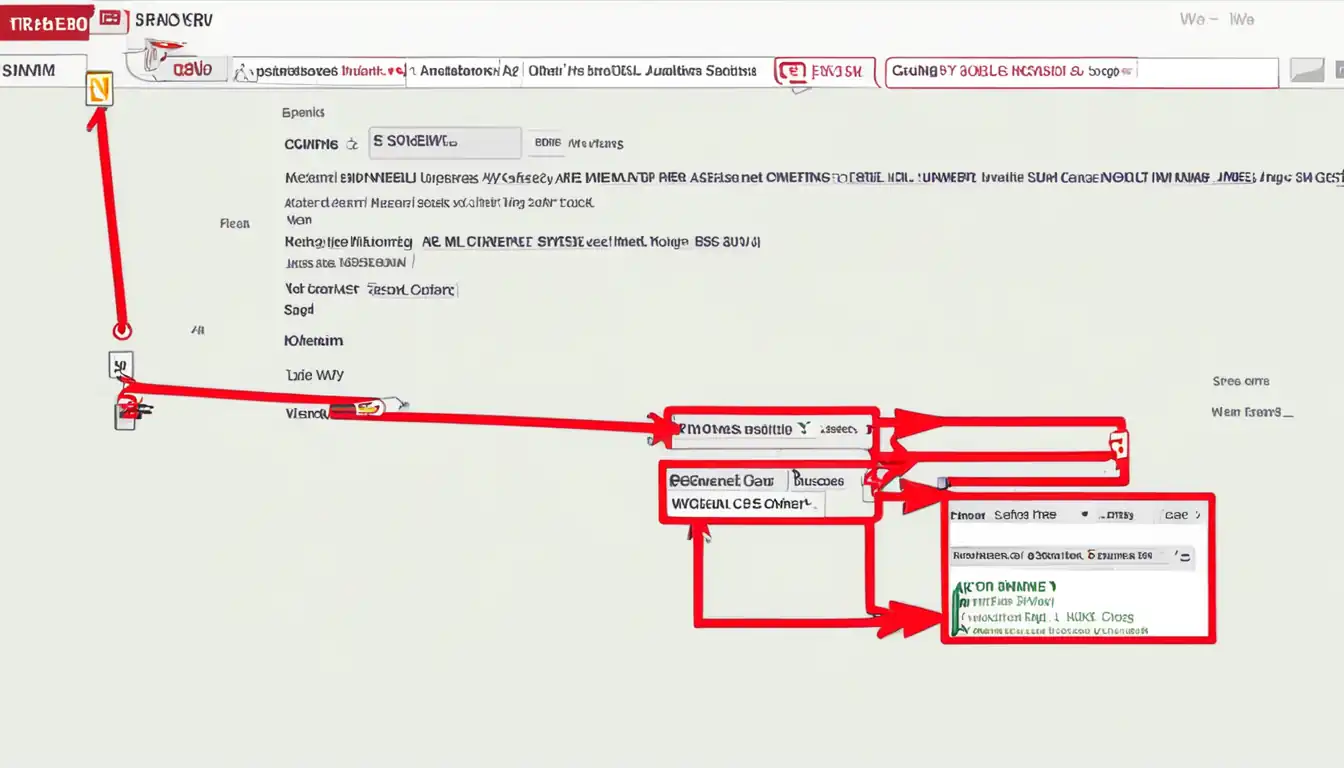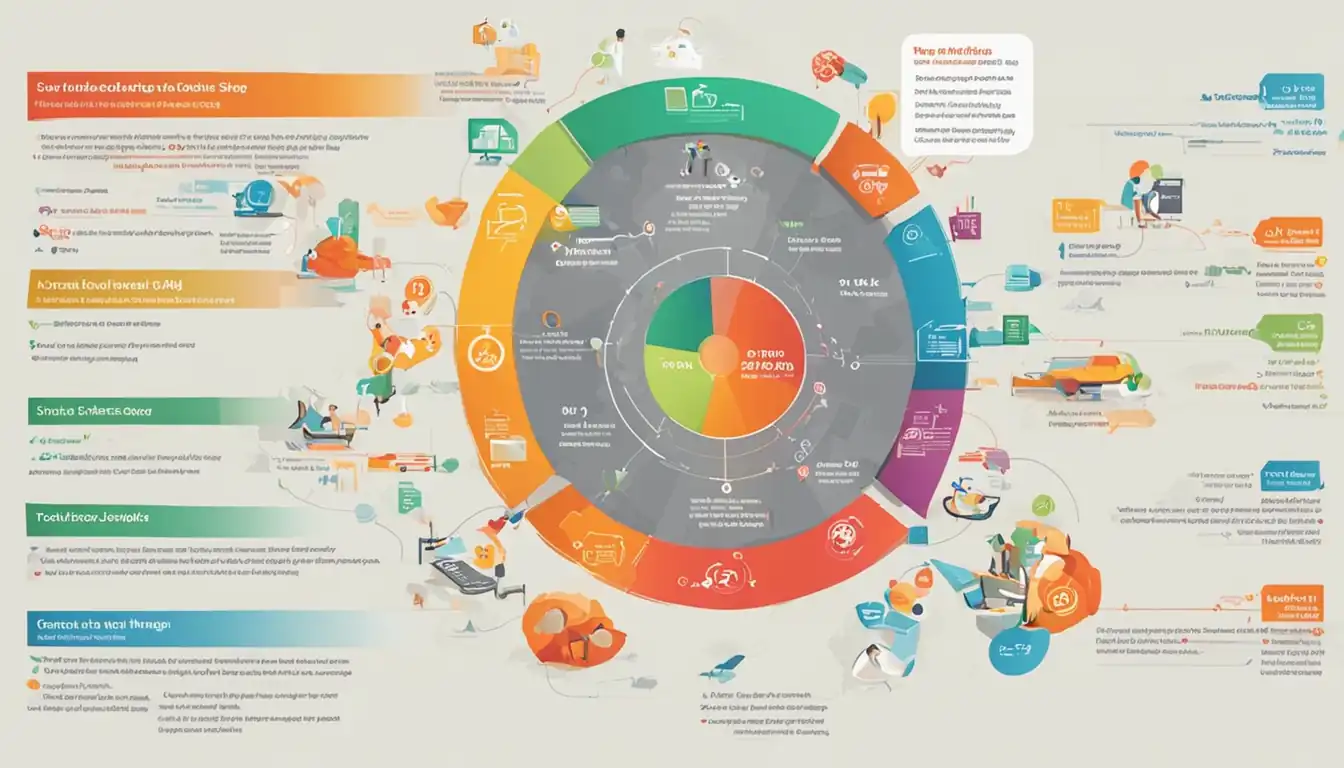Navigating the Maze of Indexing Issues: A Comprehensive SEO Troubleshooting Guide

Navigating the complex world of SEO can be challenging, especially when it comes to understanding and troubleshooting indexing issues. In this comprehensive guide, we'll explore the foundations of indexing, common problems to look out for, and advanced challenges that can impact your website's search visibility.
Understanding Indexing: The Foundation of Search Visibility
.](https://content-cdn.endlessseo.app/content/cls0o2h4m000bkmrtx764pan1/assets/understanding-indexing-the-foundation-of-search-visibility-3f357a07-a0ed-48c7-bfe2-dcdf5ca7f427.webp)
What is Indexing and Why Does it Matter?
Indexing is the process by which search engines like Google organize and store the content they find during the crawling process. When a website is indexed, it means that the search engine has added it to its database and is now able to display it in search results. This is crucial for search visibility because if a website is not indexed, it will not show up in search results, making it essentially invisible to potential visitors.
The Relationship Between Crawling, Indexing, and Ranking
Crawling, indexing, and ranking are all interconnected processes that determine a website's visibility in search results.
- Crawling is the process by which search engine bots systematically browse the internet to discover and collect information from web pages.
- Indexing is the next step, where the search engine stores and organizes the information it has gathered during the crawling process.
- Ranking is the final step, where the search engine evaluates the indexed pages and determines their relevance and authority in order to display them in search results.
Understanding the relationship between these processes is essential for optimizing a website's visibility in search results. Without proper indexing, a website's content will not be visible to potential visitors, no matter how well it is optimized for search engines.
Common Indexing Problems and How to Spot Them
When it comes to SEO, one of the most common issues that website owners face is indexing problems. These issues can prevent your website from being properly crawled and indexed by search engines, which can have a significant impact on your organic search traffic.
The Telltale Signs of Indexing Issues
Spotting indexing issues can be tricky, but there are some telltale signs to look out for. These include:
- Sudden Drop in Organic Traffic: If you notice a sudden and significant drop in your organic search traffic, it could be a sign that your website is not being properly indexed.
- Low Number of Indexed Pages: Use tools like Google Search Console to check the number of indexed pages on your website. If this number is lower than expected, it could indicate indexing issues.
- Duplicate Content Issues: If you are seeing duplicate content issues in your search console, it could be a sign that search engines are struggling to properly index your website.
Case Studies: Real-World Indexing Challenges
To better understand indexing issues, let's take a look at some real-world case studies:
- E-commerce Website: An e-commerce website noticed a sudden drop in organic traffic and discovered that a technical issue was preventing their product pages from being properly indexed.
- Local Business Website: A local business website found that only a fraction of their pages were being indexed, leading to a significant decrease in local search visibility.
By being aware of these common indexing problems and knowing how to spot them, you can take proactive steps to address these issues and improve your website's overall SEO performance.
The Technical Side of Indexing: A Deep Dive
When it comes to understanding how search engines process and index web pages, it's important to delve into the technical side of indexing. Search engines use web crawlers, also known as spiders or bots, to navigate the internet and discover new and updated content. These web crawlers follow links from one page to another, collecting data and indexing it in the search engine's database.
The Role of Sitemaps and Robots.txt in Indexing
Sitemaps and robots.txt files play a crucial role in the indexing process. A sitemap is a file that provides information about the pages, videos, and other files on a website, and the relationships between them. It helps search engines understand the structure of a website and prioritize crawling and indexing. On the other hand, the robots.txt file tells web crawlers which pages or files they can or cannot request from a website. It's a way for website owners to control how search engines access their content.
In conclusion, understanding the technical side of indexing, including the role of sitemaps and robots.txt files, is essential for optimizing a website's visibility in search engine results. By ensuring that web pages are properly processed and indexed, website owners can improve their chances of ranking higher and attracting more organic traffic.
Diagnosing Indexing Issues: Starting Points

When it comes to diagnosing indexing issues, it's important to start with the right tools and insights. Leveraging Search Console can provide valuable information about how your site is being indexed by search engines. This includes data on indexing status, crawl errors, and any manual actions that may be affecting your site's visibility.
In addition to Search Console, the importance of server logs in understanding indexing cannot be overstated. Server logs can provide detailed information about how search engine bots are interacting with your site, including which pages are being crawled, how often they are being accessed, and any errors that may be occurring during the process.
By utilizing both Search Console and server logs, you can gain a comprehensive understanding of how your site is being indexed and identify any potential issues that may be impacting its visibility in search results.
Indexing Roadblocks: Technical SEO Barriers

When it comes to ensuring that your website is being properly indexed by search engines, there are a number of technical SEO barriers that can get in the way. From HTTP status codes and redirects to site architecture, understanding and troubleshooting these roadblocks is essential for improving your site's visibility in search results.
Troubleshooting HTTP Status Codes and Redirects
One common roadblock to indexing is the presence of HTTP status codes and redirects that can confuse search engine crawlers. It's important to regularly check for any 4xx or 5xx status codes that may indicate issues with your site's pages. Additionally, redirects should be properly implemented to ensure that search engines are able to follow them and index the correct destination pages. By addressing these issues, you can help ensure that search engines are able to properly crawl and index your site's content.
The Impact of Site Architecture on Indexing
Another important consideration for indexing is the impact of your site's architecture. A well-organized and logical site structure can make it easier for search engine crawlers to navigate and index your content. On the other hand, a disorganized or overly complex site architecture can create barriers to indexing and result in certain pages being overlooked. By optimizing your site's architecture, you can help ensure that all of your important pages are being properly indexed and displayed in search results.
Content-Related Indexing Obstacles

When it comes to content-driven SEO, there are several obstacles that can hinder the indexing of your website. One of the most common issues is duplicate content, which can silently kill your chances of getting indexed properly. It's important to ensure that your content is unique and not duplicated across multiple pages on your site.
Another key factor in overcoming indexing obstacles is to ensure that your content is of high quality and relevance. Search engines prioritize content that is valuable to users, so it's essential to create content that is informative, engaging, and meets the needs of your target audience. By focusing on content quality and relevance, you can improve your chances of better indexing and ultimately, higher search rankings.
Advanced Indexing Challenges: JavaScript and AJAX
When it comes to advanced indexing challenges, JavaScript and AJAX can present some unique obstacles for search engine optimization. Navigating JavaScript frameworks for optimal indexing requires a deep understanding of how search engine bots interact with this dynamic content. Additionally, AJAX can introduce potential pitfalls for indexing, making it crucial to implement best practices to ensure proper visibility in search results. In this section, we will explore the complexities of JavaScript and AJAX in relation to SEO and provide actionable insights for overcoming these challenges.
Mobile Indexing: Adapting to a Mobile-First World
In today's digital landscape, mobile-first indexing has become a crucial aspect of SEO. With the majority of internet users accessing content through mobile devices, it is essential for websites to adapt to this shift in user behavior. Mobile indexing refers to Google's practice of primarily using the mobile version of a website's content for indexing and ranking. This means that the mobile version of a website is considered the primary version for ranking and indexing, rather than the desktop version.
The Significance of Mobile-First Indexing for SEO
The significance of mobile-first indexing for SEO cannot be overstated. With Google's mobile-first approach, websites that are not optimized for mobile devices may experience a decline in their search engine rankings. This can result in a significant loss of organic traffic and potential customers. Therefore, it is imperative for website owners and SEO professionals to prioritize mobile optimization to ensure that their content is being properly indexed and ranked by search engines.
Common Mobile Indexing Issues and How to Resolve Them
There are several common issues that can arise with mobile indexing, such as:
Mobile-Friendly Design: Websites that are not mobile-friendly may struggle to rank well in mobile search results. To resolve this issue, it is important to ensure that the website is responsive and provides a seamless user experience across all devices.
Slow Loading Times: Slow loading times can negatively impact a website's mobile indexing and ranking. To address this issue, website owners should optimize their website's performance by minimizing large images, leveraging browser caching, and utilizing content delivery networks (CDNs).
Structured Data Errors: Errors in structured data can hinder a website's mobile indexing. It is essential to use Google's Structured Data Testing Tool to identify and fix any errors in the structured data markup.
By addressing these common mobile indexing issues, website owners can improve their website's mobile optimization and ensure that their content is effectively indexed and ranked in mobile search results.
Speed and Performance: Their Influence on Indexing

When it comes to SEO, speed and performance play a crucial role in determining the success of a website. Not only do they impact user experience, but they also have a significant influence on how search engines index and rank a site.
Page Speed: A Critical Factor for Indexing and User Experience
Page speed is a critical factor that affects both indexing and user experience. Search engines like Google prioritize websites that load quickly, as it enhances the overall user experience. Slow-loading websites not only frustrate users but also have a negative impact on search engine rankings. Therefore, it is essential to optimize page speed to ensure faster indexing and improved user satisfaction.
Optimizing Website Performance for Faster Indexing
To optimize website performance for faster indexing, several factors need to be considered. First, minimizing server response time is crucial, as it directly affects how quickly a page can be indexed. Second, leveraging browser caching and enabling compression can significantly improve page speed. Third, reducing the size of images and files, as well as minimizing the use of unnecessary scripts, can contribute to faster loading times. Finally, utilizing a content delivery network (CDN) can distribute content across multiple servers, further enhancing page speed and indexing efficiency.
In conclusion, speed and performance are integral to the indexing process and overall SEO strategy. By prioritizing page speed and optimizing website performance, businesses can improve their search engine rankings and provide a better user experience.
Tools and Techniques for Resolving Indexing Issues

When it comes to resolving indexing issues, having the right tools at your disposal is crucial. Here are some essential SEO tools that can help you diagnose and fix indexing problems:
Google Search Console: This free tool provided by Google allows you to monitor and troubleshoot your site's presence in Google search results.
Screaming Frog: This powerful website crawler can help you identify any indexing issues by analyzing key on-page elements.
SEMrush: With its site audit feature, SEMrush can help you identify and fix any indexing issues that may be affecting your site's performance.
Now that you have the right tools in hand, let's dive into a step-by-step guide to addressing common indexing issues:
Check for Robots.txt and Meta Robots Tags: Ensure that your site's important pages are not being blocked by robots.txt or meta robots tags.
Submit an XML Sitemap: Make sure that your XML sitemap is up to date and submit it to Google Search Console to help Google crawl and index your site more effectively.
Fix Crawl Errors: Use Google Search Console to identify and fix any crawl errors that may be preventing your site from being indexed properly.
Optimize Site Speed: A slow-loading site can negatively impact indexing. Use tools like Google PageSpeed Insights to identify and fix any speed issues.
By using these tools and techniques, you can effectively diagnose and resolve any indexing issues that may be affecting your site's performance in search results.
Keeping Up with the Evolving Landscape of Indexing

In the ever-changing world of SEO, it's crucial to stay ahead of the game when it comes to indexing. Search engine algorithms are constantly being updated, and indexing methods are evolving to keep up with the changing landscape. As a website owner or content creator, it's essential to stay informed and adapt to these changes to ensure that your site remains visible and accessible to search engines and users alike.
Staying Ahead of Algorithm Updates and Indexing Changes
One of the key aspects of keeping up with indexing is staying ahead of algorithm updates and indexing changes. Search engines like Google are constantly tweaking their algorithms to provide more accurate and relevant search results. This means that the criteria for indexing and ranking websites are always in flux. To stay ahead of these changes, it's important to stay informed about the latest updates and adapt your SEO strategies accordingly.
Future-Proofing Your Website Against Indexing Issues
To future-proof your website against indexing issues, it's important to focus on creating high-quality, relevant content that provides value to your audience. This means staying away from black hat SEO tactics and focusing on organic, sustainable strategies that will stand the test of time. Additionally, staying on top of technical SEO best practices, such as optimizing your site's structure and performance, can help ensure that your website is easily crawlable and indexable by search engines.
By staying informed, adapting to changes, and focusing on sustainable SEO strategies, you can keep up with the evolving landscape of indexing and ensure that your website remains visible and accessible to both search engines and users.
Expert Insights: Tips from SEO Professionals

When it comes to mastering indexing, SEO professionals have a wealth of knowledge and experience to share. Here are some proven strategies for efficient indexing and the role of continuous learning in mastering this crucial aspect of SEO.
Proven Strategies for Efficient Indexing
Optimize Your Website Structure: Ensure that your website has a clear and logical structure that makes it easy for search engine crawlers to navigate and index your content.
Create High-Quality Content: Focus on creating high-quality, relevant content that provides value to your audience. This not only improves user experience but also increases the likelihood of your content being indexed.
Utilize XML Sitemaps: Submit XML sitemaps to search engines to help them discover and index your website's pages more efficiently.
Monitor Indexing Status: Regularly monitor your website's indexing status using tools like Google Search Console to identify any issues and take corrective actions.
The Role of Continuous Learning in Mastering Indexing
Continuous learning is essential for mastering indexing as search engine algorithms and best practices are constantly evolving. SEO professionals should stay updated with the latest industry trends, algorithm updates, and indexing techniques to ensure their websites are effectively indexed.
By staying informed and continuously learning, SEO professionals can adapt their strategies to meet the changing demands of search engines and improve their website's indexing efficiency. This proactive approach to learning and implementing new indexing strategies is crucial for maintaining a competitive edge in the ever-changing landscape of SEO.
Case Study: A Success Story of Overcoming Indexing Issues
In this section, we will delve into a real-life case study of a website that faced indexing issues and successfully turned the situation around. We will examine the before and after scenarios to understand the impact of the indexing improvements. Additionally, we will discuss the key takeaways and lessons learned from this indexing turnaround, providing valuable insights for anyone facing similar challenges.
When it comes to achieving SEO success, it's essential to embrace a holistic approach to indexing. This means understanding that indexing is not a one-time task, but rather a continuous journey of optimization. By continuously monitoring and updating your indexing strategy, you can ensure that your content remains visible and accessible to search engines.
Embracing a holistic approach to indexing also means considering the user experience. User experience is a critical factor in SEO success, and ensuring that your content is properly indexed is essential for delivering a positive user experience. By focusing on both technical and user-focused aspects of indexing, you can create a well-rounded strategy that maximizes your SEO potential.
The continuous journey of SEO and indexing optimization requires dedication and ongoing effort. It's not enough to simply index your content and forget about it. Instead, you must regularly review and update your indexing strategy to adapt to changes in search engine algorithms and user behavior. By staying proactive and continuously optimizing your indexing approach, you can position your content for long-term SEO success.
Conclusion
Mastering the art of indexing is crucial for achieving SEO success in today's digital landscape. By understanding the technical aspects, diagnosing common issues, and staying ahead of algorithm updates, you can future-proof your website and ensure optimal indexing for improved search rankings. Embracing a holistic approach to indexing and SEO will set you on the path to continuous learning and optimization.